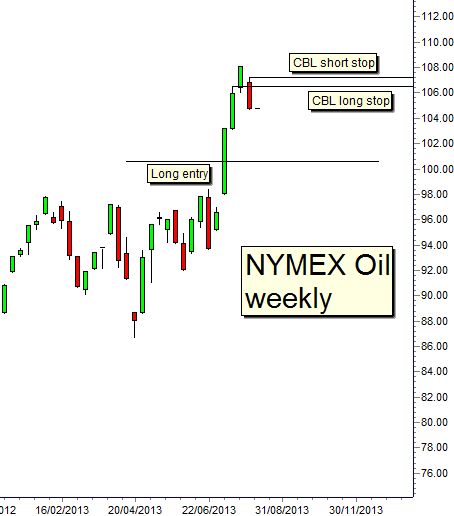The new market bogeyman in the oil markets is the flash crash. When we are short of catastrophe, we tend to summon up the potential for such a scenario and this has been applied to trading in Nymex oil.
A flash crash is when algorithms go bad. In previous times, it was often called a fat finger error where a much lower sell order was placed by accident and the market plummeted to meet the sell before rapidly returning to the previous trading level.
We developed 'snatch and grab' trading strategies around these so-called "kangaroo tails." Whilst it's comforting to think that algorithms do not make mistakes, it's useful to remember that programmers do make mistakes.
(Read more: Prince warns US shale could hurt Saudi economy)
In our July 7 column, we flagged a Stop and Reverse (SAR) trade opportunity with oil. It was predicated on the divergence in behavior between the Egyptian Stock Exchange and the developing Egyptian crisis. The "frightened" money flees, and the "confident" money stays. In Egypt it was staying, but foreigners were driving up the price of oil, a slow moving flash crash in reverse.
The trading strategy was to apply an SAR, or stop-and-reverse trade. This is a rally trade. It's not a trend trade. We expect this to be a short-term momentum pop, followed by a retreat back to under $100. It starts with trading from the long side with upward momentum.




